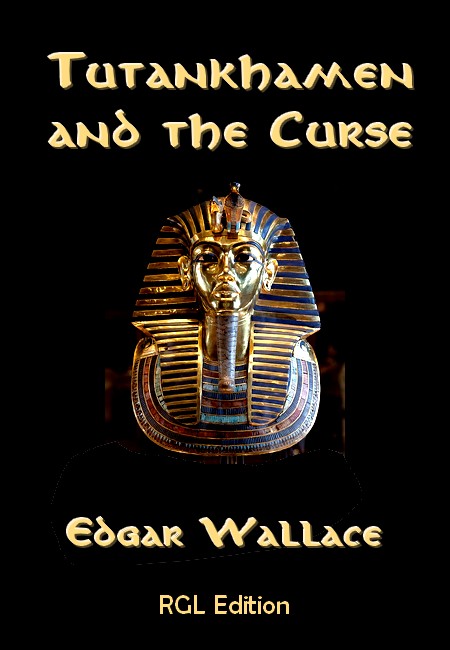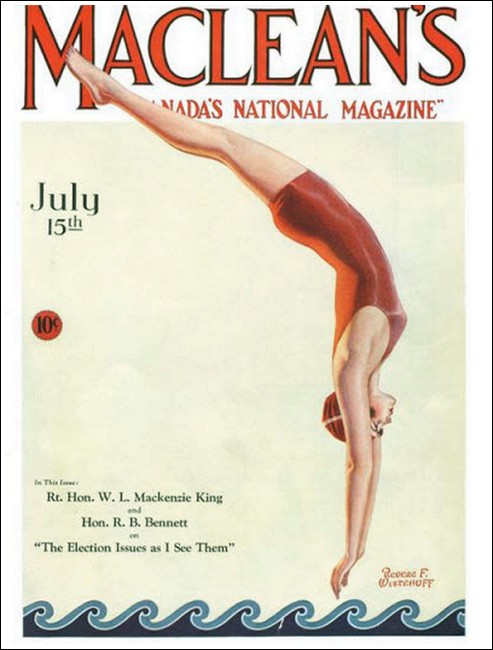
RGL e-Book Cover©
Roy Glashan's Library
Non sibi sed omnibus
Administered by Matthias Kaether and Roy Glashan
Go to Home Page
This work is out of copyright in countries with a copyright
period of 70 years or less, after the year of the author's death.
If it is under copyright in your country of residence,
do not download or redistribute this file.
Original content added by RGL (e.g., introductions, notes,
RGL covers) is proprietary and protected by copyright.

RGL e-Book Cover©


Macleans, 15 Jul 1930, with "Tutankhamen and the Curse"
Writer Points Out Tragedies Overtaken Discoverers and Explorers of the Tomb.
A PORTLY dragoman watched the little group of helmeted Europeans who were directing the excavations of Tutankhamen's tomb. He turned to his employer, the special correspondent of a London newspaper, and said: "They will find gold and death."
The startled newspaper man asked why, writes Edgar Wallace, the novelist, in McCall's.
"Because," said the dragoman, the old gods live. This man"—he waved his hand contemptuously toward the tomb—"was an unbeliever. He found the old gods too late; and he offended the god of all gods, Amen-Ra."
Somebody told Lord Carnarvon this story. He did not laugh at it. He was a very sane, unemotional man. In all seriousness, he immediately said: "I recognize that possibility."
And this is the fact that is curious, that every mummy which is supposed by popular tradition to be "unlucky" is the mummy of one who has defied the great gods.
Tutankhamen was buried with elaborate ceremonial, but they made no image of Ra in yellow and set it at the bow of the boat which carried his swathed body; nor did they paint on suitable plaques the figures of the gods Tern, Shu, Tefnut, Seb, Mut, Osiris, Isis, Suti, and Nephthys and anoint them with cedar oil. And the Spell of Peace did not go into the closed cavern where they laid the body of the young king. Only a great unrest. For although Tutankhamen was hastily recalling the exiled divinities, and had changed his very name to propitiate them, the Old Ones who sit on the Parapets of Hell were not with him, and their wrath dwelt in the pitch-dark chamber where they laid the embalmed shell of the unbeliever.
Some day we shall discover that thought has substance and that love and hate are as material as the rays of the sun; then we shall know that the stories we dismiss as myths and the frantic imaginings of half-demented priests are terribly well-founded in sober fact. Hate may not lie like a cloud over the Valley of the Kings, nor stand, an invisible and vengeful shape, to bar intrusion into the mysteries of the dead; but hate is there, a tangible and everlasting factor.
Very clear-headed scientists viewed the excavations with uneasiness. Such men do not believe in ghosts; but they do not preclude the possibilities of psychic phenomena.
There are hoodoo men and women who doubts this? There are ordinary people who carry with them into house and office an aura of disaster or fortune. The X which produces such phenomena is a mystery as yet unsolved.
In Tutankhamen's tomb was the supreme x, which was death.
With Lord Carnarvon were Howard Carter and his secretary, Dick Bethell, M. Benedite, the French archaeologist, who was in charge of the Department of Antiquities at Cairo, and M. Pasanova. Of those men only one remains alive.
When the tomb was opened two other notables entered. One was Colonel Aubrey Herbert, Carnarvon's half brother; the other was Evelyn-White. When Aubrey Herbert entered the cavern he shivered and stopped, reluctant to go on. "I wish to God Carnarvon hadn't found this tomb. Something dreadful is going to happen to our family."
Before the year was out he was dead.
When the door was forced Carnarvon walked into the tomb with a smile and a jest. "I wish he hadn't laughed—he will be dead in six weeks," said Arthur Weigall, the writer. Something stung Lord Carnarvon on the cheek. He was a dead man before the wonders of the tomb were fully revealed.
Evelyn-White, Egyptologist and scholar, became a changed man after the tomb was opened. It was as though he were haunted by some unseen and dreadful presence. Within a year he had committed suicide. "There was a curse upon me," he wrote in the letter he left behind him.
The Egyptian authorities brought Sir Archibald Douglas Reed, a great radiologist, to X-ray the mummy. Within a year he was a dead man.
Professor Laffleur, of McGill University, was the first American scientist to examine the chamber of death. He did not leave Luxor alive.
Young men, old men, men in the prime of life, men for whose lives any insurance office would have exacted the minimum premium, died, mysteriously, tragically. Only Howard Carter remains of the principals. Almost every workman who entered the tomb has passed into the shadows.
Seven French authors and journalists visited the tomb; six were dead within two years. When they unveiled Tutankhamen they found a mark upon his face—the mark left on Lord Carnarvon's face was in exactly the same position.
On the day the tomb was opened a cobra, which was the sacred snake of Egypt, went into Howard Carter's house and destroyed his favorite pet, a canary that the explorer took with him wherever he went; the cobra is the rarest snake in Egypt.
Woolf Joel visited the tomb, and was dead within a year. Jay Gould was taken ill in the tomb and died. To every man without exception who has visited the tomb, misfortune has come.
The most sceptical admit that there is something more than coincidence in the fatalities which have followed association even with minor articles that have been taken from the tomb. Pieces which have been placed in the Cairo Museum have been "working." Attendants whose duty it is to look after these exhibits have sickened and died for no known reason.
The famous Dr. Mardus was convinced that the opening of Tutankhamen's tomb would bring death. "The Egyptians for 7,000 years possessed the secret of surrounding their mummies with some dynamic force of which we have only the faintest idea," he said.
Roy Glashan's Library
Non sibi sed omnibus
Go to Home Page
This work is out of copyright in countries with a copyright
period of 70 years or less, after the year of the author's death.
If it is under copyright in your country of residence,
do not download or redistribute this file.
Original content added by RGL (e.g., introductions, notes,
RGL covers) is proprietary and protected by copyright.